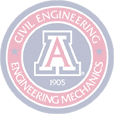
|
|
|
|
|
|
|
|
|
|
|
|
Post-Tensioned Connection System |
||
|
|
|
||
|
|
|
The post-tensioned connector system provides the high initial rotational stiffness of welded full-moment connections, the reliable ductility of semi-rigid connections, and the self-centering capabilities of prestressed construction. The system utilizes steel connectors and special post-tensioning elements. The post-tensioning gage length across the connection is relatively short thus a special post-tensioning material is required. Several high-strength low-modulus materials have been evaluated for the post-tensioning element including aluminum, titanium and fiber-reinforced composites. Thus far, the superelastic properties of the shape memory alloy, Nitinol, have provided the optimal solution. Connection Concept: The connecting system is being developed within a performance-based engineering framework to meet requirements related to structural damage and drift. For service wind loading or low-level seismic events, the connectors are detailed to possess high inherent elastic stiffness in comparison to traditional semi-rigid connections, rendering the structural drifts within acceptable limits. At design earthquake levels, the connectors provide stable hysteretic behavior while incurring only modest damage due to the elastic nature of the post-tensioning. For survival level events, the post-tensioning enters its superelastic ranges reducing the permanent drift in the frame. Analytical Research: Finite element analyses are being performed to examine the hysteretic behavior of the post-tensioned system Parameters include location (vertical) of the post-tensioning element, pretension level, and the relative strength of the post-tensioning to the connector. A prototype design has been developed. Currently, nonlinear dynamic analyses of structures employing the prototype design are being performed. The objective of these analyses is to provide system designs that meet accepted performance criteria for multiple levels of seismic intensity. The system has shown promising response reduction and self-centering effects. Prototype Development and Experimental Program: Meetings were held with industry partners to develop the prototype. Subsequently, a Nitinol strand configuration was devised that meets the specifications of the prototype design. At this time, the proper end-anchorage detail is being investigated. An experimental setup has been designed and built to test the post-tensioned connection system. These experiments will occur when the anchorage design is complete. More information can be found in NSF Report
: ^ back to top ^ |
|

